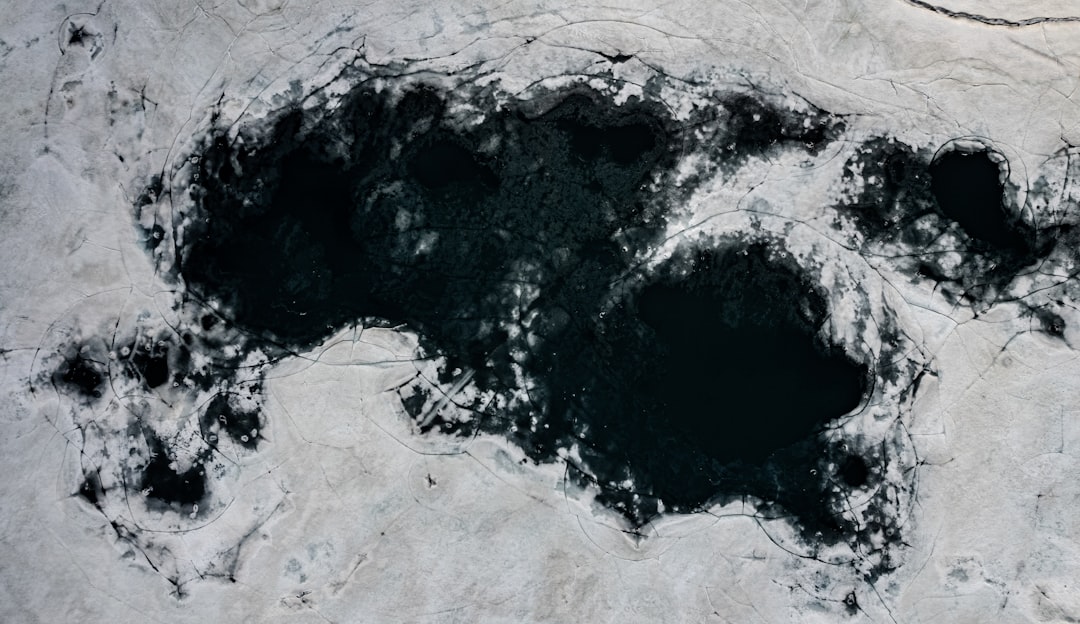The South Atlantic Anomaly (SAA) is a fascinating and complex phenomenon that has garnered significant attention from scientists and researchers alike. This region, characterized by a notable dip in the Earth’s magnetic field, extends over parts of South America and the southern Atlantic Ocean. The anomaly is particularly intriguing because it represents an area where the magnetic field strength is considerably weaker than the surrounding regions.
This weakness can have profound implications for both natural phenomena and human-made technologies, making it a subject of ongoing study and interest. The SAA is not merely a geographical curiosity; it poses unique challenges and opportunities for understanding the Earth’s magnetic environment. As the planet’s magnetic field plays a crucial role in protecting life from harmful cosmic radiation, the SAA’s diminished strength raises questions about its potential impacts on satellites, spacecraft, and even terrestrial systems.
The anomaly serves as a reminder of the dynamic nature of Earth’s magnetic field and its influence on various aspects of life on Earth and beyond.
Key Takeaways
- The South Atlantic Anomaly is a region in the Earth’s magnetic field that poses potential risks to satellites and spacecraft.
- The anomaly is caused by the weakening of the Earth’s magnetic field in the region, leading to increased exposure to cosmic radiation.
- Historical data shows that the South Atlantic Anomaly has been gradually expanding over the past few centuries.
- Recent trends indicate that the anomaly is continuing to grow and may have significant impacts on technology and space exploration.
- Scientific research and studies are ongoing to better understand the anomaly and its potential effects, as well as to develop strategies to mitigate its impacts.
What Causes the South Atlantic Anomaly?
The origins of the South Atlantic Anomaly can be traced back to the complex interactions between the Earth’s core and its magnetic field. The Earth’s magnetic field is generated by the movement of molten iron in the outer core, a process known as the geodynamo. However, this process is not uniform, leading to variations in magnetic field strength across different regions.
The SAA is believed to be a result of these irregularities, particularly due to the offset between the Earth’s magnetic and rotational axes. Additionally, the SAA is influenced by the presence of the South American continent, which interacts with the magnetic field in unique ways. The geological features of this region, including mountain ranges and tectonic plate boundaries, contribute to the anomaly’s characteristics.
As scientists continue to study these interactions, they gain insights into not only the SAA but also broader geophysical processes that shape our planet.
Historical Data on the South Atlantic Anomaly

Historical data on the South Atlantic Anomaly reveals a rich tapestry of observations that have evolved over time. The anomaly was first identified in the late 20th century when satellite missions began to provide detailed measurements of Earth’s magnetic field. Early studies indicated that the SAA was not a static feature; rather, it exhibited fluctuations in size and intensity over the years.
These changes prompted researchers to delve deeper into understanding its behavior and implications. As satellite technology advanced, so did the ability to monitor the SAA more accurately. Data collected from various missions, including NASA’s CHAMP (Challenging Mini-satellite Payload) and ESA’s Swarm satellites, have provided invaluable insights into the anomaly’s historical trends.
Researchers have documented shifts in its boundaries and variations in magnetic field strength, allowing for a more comprehensive understanding of its dynamics over time.
Recent Trends in the South Atlantic Anomaly
| Year | Intensity Decrease | Geomagnetic Field Shift |
|---|---|---|
| 2015 | 6% | 1.8° per year |
| 2016 | 8% | 2.5° per year |
| 2017 | 10% | 3.5° per year |
| 2018 | 12% | 4.2° per year |
| 2019 | 14% | 5.0° per year |
In recent years, observations indicate that the South Atlantic Anomaly has been undergoing significant changes. Studies suggest that it has been expanding in size and intensity, raising concerns among scientists about its potential implications for technology and human activities. The anomaly’s growth has been linked to ongoing shifts in the Earth’s magnetic field, which are part of a natural cycle but may also be influenced by anthropogenic factors.
The expansion of the SAA has prompted researchers to investigate its potential impacts on satellites and other space-based technologies. Increased exposure to cosmic radiation in this region can lead to malfunctions or damage to electronic systems aboard spacecraft. As a result, understanding these recent trends is crucial for developing strategies to mitigate risks associated with operating in or near the anomaly.
Scientific Research and Studies on the South Atlantic Anomaly
Scientific research on the South Atlantic Anomaly has flourished in recent years, driven by advancements in technology and a growing interest in understanding its implications.
This interdisciplinary approach has yielded valuable insights into not only the SAA itself but also broader geophysical processes.
Numerous studies have focused on modeling the SAA’s magnetic field variations and predicting future trends. These models incorporate data from satellite missions, ground-based observations, and computer simulations to create a comprehensive picture of the anomaly’s dynamics. By analyzing historical data alongside current measurements, scientists aim to identify patterns that may inform predictions about how the SAA will evolve in the coming years.
Potential Impacts of a Growing South Atlantic Anomaly

The potential impacts of a growing South Atlantic Anomaly are multifaceted and warrant careful consideration. One of the most immediate concerns is its effect on satellites and space missions. As the anomaly expands, spacecraft passing through this region may experience increased exposure to radiation, which can lead to malfunctions or degradation of sensitive instruments.
This poses challenges for both scientific missions and commercial satellites that rely on accurate data transmission. Moreover, the implications extend beyond space technology. The SAA’s influence on Earth’s magnetic field can also affect navigation systems, including those used in aviation and maritime operations.
Disruptions in these systems could lead to navigational errors or increased risks during critical operations. As such, understanding and addressing these potential impacts is essential for ensuring safety and reliability in various sectors.
The Role of Satellites and Spacecraft in Monitoring the Anomaly
Satellites and spacecraft play a pivotal role in monitoring the South Atlantic Anomaly and providing valuable data for scientific research. Missions such as NASA’s Swarm satellites have been instrumental in mapping the Earth’s magnetic field with unprecedented precision. These satellites are equipped with advanced sensors that measure variations in magnetic field strength, allowing researchers to track changes in real-time.
The data collected from these missions not only enhances understanding of the SAA but also contributes to broader studies of Earth’s magnetic environment. By continuously monitoring fluctuations in magnetic field strength, scientists can identify trends that may indicate shifts in geophysical processes. This information is crucial for developing predictive models that can inform future research and technological advancements.
Predictions and Forecasts for the Future of the South Atlantic Anomaly
As research into the South Atlantic Anomaly continues to evolve, scientists are making predictions about its future trajectory. Current models suggest that the anomaly may continue to expand in size and intensity over the coming decades. This projection is based on observed trends as well as an understanding of underlying geophysical processes that govern magnetic field dynamics.
However, predicting the exact behavior of the SAA remains challenging due to its complex nature. Factors such as changes in Earth’s core dynamics or external influences from solar activity can impact its evolution. As researchers refine their models and gather more data, they aim to improve forecasting capabilities, which will be essential for mitigating potential risks associated with a growing anomaly.
Measures to Mitigate the Effects of a Growing Anomaly
In light of the potential impacts associated with a growing South Atlantic Anomaly, various measures can be implemented to mitigate its effects on technology and human activities. For satellite operators, developing robust shielding techniques for spacecraft can help protect sensitive instruments from increased radiation exposure. Additionally, real-time monitoring systems can provide alerts for satellites entering or operating within the anomaly’s boundaries.
Furthermore, collaboration between scientists, engineers, and policymakers is essential for developing comprehensive strategies to address challenges posed by the SAThis includes investing in research initiatives aimed at understanding its dynamics better and exploring innovative solutions for safeguarding technology operating in affected regions.
Public Awareness and Education about the South Atlantic Anomaly
Raising public awareness about the South Atlantic Anomaly is crucial for fostering understanding of its significance and potential impacts. Educational initiatives can help demystify this complex phenomenon and highlight its relevance to everyday life. Engaging with communities through outreach programs, workshops, and online resources can empower individuals with knowledge about how changes in Earth’s magnetic field may affect technology and navigation systems.
Moreover, promoting interest in scientific research related to the SAA can inspire future generations to pursue careers in geophysics, space science, and related fields. By fostering curiosity about our planet’s dynamic systems, society can cultivate a deeper appreciation for scientific inquiry and its role in addressing contemporary challenges.
Conclusion and Recommendations for Further Research
In conclusion, the South Atlantic Anomaly represents a captivating intersection of geophysics, space science, and technology. As it continues to evolve, understanding its causes, implications, and potential impacts becomes increasingly important for both scientific communities and society at large. Ongoing research efforts are essential for unraveling its complexities and developing strategies to mitigate associated risks.
Future research should focus on refining predictive models that account for various influencing factors while also exploring innovative solutions for protecting technology operating within or near the anomaly. Additionally, fostering public awareness through education initiatives will be vital for promoting understanding of this phenomenon’s significance. By prioritizing research and education efforts, society can better navigate the challenges posed by a growing South Atlantic Anomaly while harnessing opportunities for scientific advancement.
The South Atlantic Anomaly (SAA) is a region where the Earth’s inner Van Allen radiation belt comes closest to the Earth’s surface, leading to an increased flux of energetic particles and posing a risk to satellites and spacecraft. Recent studies have raised concerns about whether this anomaly is expanding, which could have significant implications for space travel and satellite operations.
